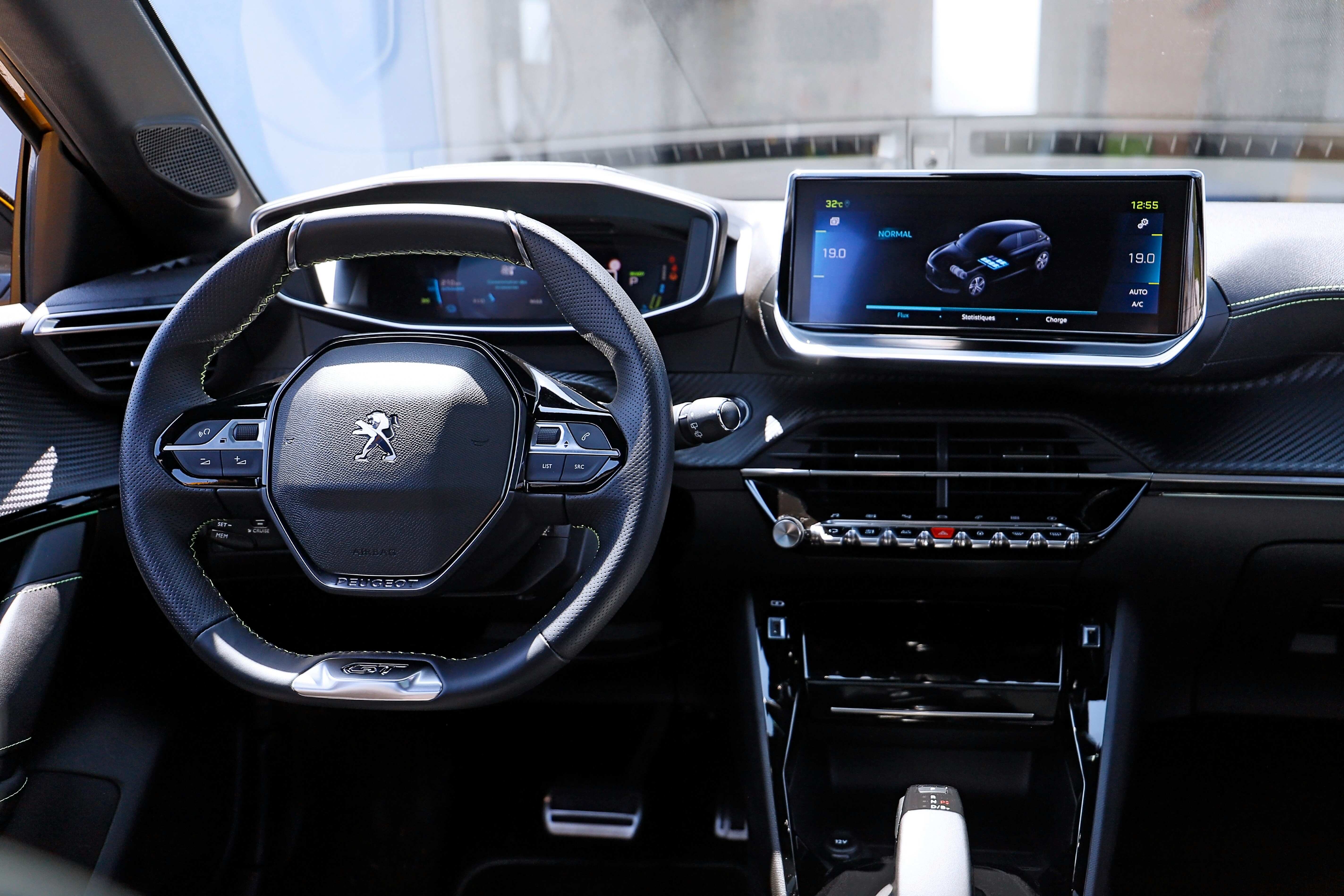
If you're following the latest trends in automotive technology, it will be no surprise that embedded systems are at the heart of industry innovation. As vehicles become more advanced, these systems play a vital role in enhancing everything from safety to the driving experience.
In this guide, we explore some of the key automotive embedded systems as we highlight how they are reshaping the industry. We also dive into the ongoing shift towards electric vehicles and how this impacts embedded systems.
So, first, let’s dive into how embedded systems are shaping the future of automotive development:
Top 5 Automotive Embedded Systems
In case you didn’t already know, Automotive embedded systems are electronic components integrated into vehicles to control and manage various functions. They consist of microcontrollers, sensors, actuators, and software working together to enable specific functionalities.
Automotive embedded systems are designed to perform tasks such as engine management, transmission control, navigation, entertainment, and safety features.
Here are some of the most impactful automotive embedded systems that are transforming the industry:
1. Adaptive Cruise Control (ACC) Systems
Embedded systems have taken cruise control to the next level. What used to be a simple speed-maintaining feature has now evolved into Adaptive Cruise Control (ACC), an embedded system that automatically adjusts your vehicle's speed based on the traffic around you. So, whether drivers are on a busy highway or a quiet road, ACC ensures a smoother, more responsive drive.
The National Safety Council reports that Advanced Driver Assistance Systems (ADAS) could potentially prevent 20,841 fatalities each year, with lane-keeping assistance playing a significant role by potentially saving 14,844 lives on its own.
Here, we highlight the key embedded system technologies of Adaptive Cruise Control in more detail:
- Radar and Lidar Sensors - These sensors detect the distance and speed of vehicles ahead, enabling the system to adjust speed dynamically.
- Embedded Processing Units - Process the data from sensors in real-time to make quick decisions on acceleration and deceleration.
- Vehicle-to-Vehicle (V2V) Communication - Enhances ACC by allowing cars to communicate with each other, further improving traffic flow and safety.
2. Anti-lock Braking System (ABS) Controller
When it comes to safety, there's no room for compromise. The Anti-Lock Braking System (ABS) is a prime example of how embedded systems can make driving safer. The ABS controller kicks in during sudden braking to prevent wheel lock-up, allowing you to maintain control of your vehicle. It’s this kind of innovation that makes embedded systems essential in critical moments.
Take a look below for more details on the function of Anti-Lock Braking Systems:
- Wheel Speed Sensors - Constantly monitor the speed of each wheel, ensuring that the system can detect and respond to potential lock-up situations instantly.
- Electronic Control Unit (ECU) - Analyzes the data from wheel speed sensors and controls brake pressure to prevent skidding.
- Hydraulic Modulators - Adjust brake pressure independently at each wheel to maintain optimal traction and control during emergency braking.
3. Infotainment System
If you are someone who values connectivity, you’ll appreciate the role of embedded systems in modern infotainment setups. Automotive-embedded systems manage everything from navigation to entertainment, ensuring that your driving experience is as enjoyable as it is efficient. With seamless integration to your smartphone and the cloud, drivers are always connected, whether taking a short commute or a long road trip.
Infotainment Systems have several impressive technical features. Here are a few for you to keep in mind:
- Touchscreen Interfaces - Provide intuitive control over navigation, media, and vehicle settings, making it easier to access features on the go.
- Bluetooth and Wi-Fi Connectivity - Allow for seamless integration with smartphones and other devices, enabling hands-free communication and streaming.
- Voice Recognition Software - Enables hands-free operation of navigation, calls, and media, contributing to safer driving by reducing distractions.
4. Engine Control Unit (ECU)
While many people focus on visible tech, the real magic often happens behind the scenes. The Engine Control Unit (ECU) is a perfect example. The ECU manages and optimizes engine performance, ensuring that fuel consumption is efficient, emissions are minimized, and streamlined functionality.
Some of the most influential embedded systems technologies that drive the function of an Engine Control Unit are as follows:
- Microcontrollers - These form the core of the ECU, processing data from various sensors to manage engine functions in real-time.
- Sensor Networks - Gather data on temperature, pressure, and other variables to feed into the ECU, allowing for precise control of engine parameters.
- Real-Time Operating Systems (RTOS) - Ensure that the ECU can handle multiple tasks simultaneously without lag, critical for maintaining engine efficiency and performance.
5. Electronic Stability Control (ESC) System
Yet another crucial player in vehicle safety is the Electronic Stability Control (ESC) system. The ESC system uses embedded technology to help drivers maintain control during sudden manoeuvres, especially in tricky driving conditions. By making real-time adjustments to the brakes on individual wheels, ESC helps prevent skids and accidents and keeps the vehicle on track.
Curious about how an ESC System works? Take a look below at the key technologies that contribute to overall operation:
- Yaw Rate Sensors - Measure the rotation of the vehicle around its vertical axis, helping the system detect loss of control.
- Accelerometers - Detect the vehicle’s acceleration in different directions, providing data to the ESC for stability corrections.
- Brake Actuation Modules - Work with the ESC to apply brakes to individual wheels as needed, enhancing vehicle stability and preventing rollovers.
How Does the Change to Electric Vehicles Impact Embedded Systems?
According to research, The global electric vehicle (EV) market, valued at £291.5 billion in 2023, is expected to more than double, reaching £714.9 billion by 2030.
With EVs expected to account for 46% of light-vehicle sales by 2025, growing to 83% by 2035, there is no question that the industry is expanding at a rapid pace as businesses race to adapt embedded systems technology to support this move.
With that in mind, let’s explore how the ongoing transition to electric vehicles is impacting embedded systems development:
1. Enhanced Complexity and Integration
The shift to EVs means embedded systems are taking on more complex roles. They’re integrating with various new technologies and functions, which requires smarter and more advanced systems.
Emerging embedded systems jobs as a result of technical advancement:
- Embedded Systems Architect - Specializes in designing the architecture of integrated systems to manage multiple functions within EVs.
- Battery Management System Engineer - Focuses on developing and optimizing embedded systems for battery monitoring, charging, and health management.
- Automotive Software Developer - Works on creating and refining the software that powers embedded systems in electric vehicles.
2. Advanced Stability Management
The ESC system will need to handle the unique dynamics of electric vehicles, including different weight distributions and braking characteristics. As a result, more sophisticated algorithms and better integration with other vehicle systems have become essential for the development of automotive embedded systems.
As ESC systems begin to evolve and advance, the following embedded systems jobs will emerge:
- Control Systems Engineer - Develops advanced control algorithms for vehicle stability and performance.
- Vehicle Dynamics Engineer - Specializes in the interaction between the vehicle's embedded systems and its physical dynamics.
- Safety Systems Engineer - Focuses on ensuring that safety-critical systems like ESC are robust and reliable.
3. Autonomous Driving Features
With the push towards self-driving cars, embedded systems are stepping up their game. Through working with advanced sensors and data processing, autonomous driving becomes a reality, and the demand for these technologies and professionals to develop them becomes vital to innovation.
Here are a few evolving and emerging embedded systems jobs in this sector:
- Autonomous Vehicle Engineer - Works on developing and integrating the embedded systems required for self-driving capabilities.
- Sensor Fusion Engineer - Focuses on combining data from multiple sensors to create a cohesive understanding of the vehicle’s environment.
- AI and Machine Learning Specialist - Develops algorithms that allow autonomous vehicles to make decisions based on real-time data.
4. Energy Efficiency and Regeneration
In EVs, managing energy efficiently is key. Embedded systems are now focused on optimizing energy use and regenerative braking, helping you get the most out of every charge. But, to optimize energy, skilled professionals in automotive embedded systems development are integral.
Below are some of the emerging job roles within the energy efficiency sector:
- Energy Systems Engineer - Specializes in optimizing energy use within electric vehicles to maximize efficiency.
- Regenerative Braking Engineer - Focuses on the development and refinement of systems that recapture and reuse energy during braking.
- Power Electronics Engineer - Designs and optimizes the embedded systems that manage energy distribution in EVs.
5. Connectivity and Smart Features
EVs are all about staying connected. Embedded systems are handling everything from vehicle-to-grid communication to smart charging solutions, making your driving experience smoother and more integrated with modern tech.
Some of the emerging embedded systems jobs within connectivity include:
- Connected Vehicle Engineer - Develops the systems that enable seamless connectivity between EVs and external networks.
- Telematics Engineer - Focuses on the embedded systems that support vehicle communication and remote diagnostics.
- Cybersecurity Specialist - Ensures that the connectivity features in EVs are secure from cyber threats.
To learn how your business can identify ideal professionals for automotive embedded systems jobs and attract and retain the correct talent, discover our insightful guide - Embedded Systems Recruitment in Automotive Engineering.
Final Word: The Role of Embedded Systems in Automotive Development
Embedded systems are undeniably central to the ongoing innovation in automotive development. From enhancing safety with systems like Adaptive Cruise Control and Anti-lock Braking Systems to revolutionizing the driving experience through advanced infotainment and Engine Control Units, these technologies are integral to modern vehicles. As the automotive industry continues to evolve, particularly with the rise of electric vehicles, the complexity and importance of embedded systems will only grow.
The shift towards electric vehicles is significantly impacting the development of embedded systems, demanding more sophisticated designs and advanced integration. With the increasing focus on energy efficiency, autonomous driving, and connectivity, new roles in the industry are emerging, requiring specialized skills and knowledge. This evolution highlights the critical role embedded systems play in not just improving vehicle performance but also in shaping the future of transportation.
Ultimately, as automotive technology advances, the demand for highly skilled professionals in embedded systems will continue to rise. Automotive engineering will be at the forefront of designing and implementing the cutting-edge technologies that will define the next generation of vehicles, making them a key driver of innovation in the automotive industry.
Experts in Placing Embedded Systems Professionals in Global Roles
Since our establishment in 2006, our automotive engineering recruitment specialists have been actively working in 42 countries worldwide. With deep expertise and an extensive network, we connect leading tech talent with global companies. Our genuine passion lies in enhancing lives and creating endless opportunities.
Whether you’re looking to grow your team or seeking embedded systems jobs, contact us today to discuss your needs.






